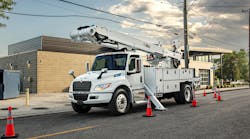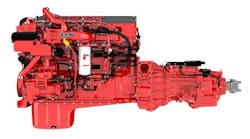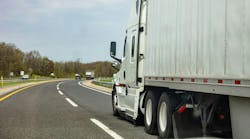In the beginning there was an engine, a transmission and an axle.
And lo! The powertrain was born!
That's an oversimplification, of course. But, in reality, basic powertrain components have changed very little over the past century.
Odds are that's about to change.
In order to remain competitive, OEMs today are constantly on the lookout for new ways to enhance truck efficiencies – both in terms of productivity and fuel economy. And while it seems that we're living in a moment where something new comes at us seemingly every single day, the truth is that there have been a lot of very smart people working on automotive designs for a very long time.
In many cases, these people had great ideas that were simply too far ahead of their time to be practical. One of my favorite examples is variable displacement technology – more simply defined as "cylinders on demand."
The concept is simple: I you're driving a V8-powered vehicle, you get all 8 cylinders banging away as you start out in traffic. As you work your way up into higher gears and the demand for horsepower and torque diminishes, the system stops two, and eventually four cylinders once you've reached highway cruising speeds.
In concept, this is a great idea: You save a lot of fuel and wear and tear on your drivetrain. Cadillac pioneered the concept in the 1980s but the results were lackluster. The concept was proven. But the mechanical control system Cadillac used at the time, simply wasn't sophisticated enough to bring cylinders on, or off-line, according to fast-changing driver needs.
Still, variable displacement was a good idea. So much so that the concept reemergence in the late 1990s just as the first onboard electronic control systems were starting to flex their muscles.
Interestingly, though, General Motors opted to shift the technology away from Cadillac. Instead, it showed up on Chevy and GMC pickup trucks. And, even more interesting, was usually paired with a hybrid gas-electric drivetrain.
I drove several editorial demonstrators of these trucks back when they were new, and I was highly impressed with both technology tracks. But, the concept didn't catch on. There were various issues at work. But my understanding is that high acquisition and maintenance costs, as well as highly complex and hard-to-maintain technology were primarily at fault.
But, I wouldn't rule either variable displacement or hybrid-electric technology out just yet. In fact, I'd say heavy-duty trucking is likely to revisit these systems before too long.
I saw my first heavy-duty hybrid drivetrain back in the 1990s when International showcased the technology for its vocational truck models. The concept was pretty slick: Battery operation at low vehicle speeds with electric-launch assist when the diesel kicked in. And the huge battery system turned the truck into a rolling mini power plant.
But those huge battery systems were heavy. And the systems were highly complex to. More than anything else, thought, those first generational hybrid drive trucks were expensive to purchase and maintain. The technology slowly faded away on the heavy-duty side of the market.
But hybrids have slowly-but-surely become a fixture on the passenger car side of the automotive industry. Over time, the drivetrains and batteries have gotten lighter, more dependable and easier to maintain.
So, the overall concept is valid. The question is how can heavy truck OEMs leverage it to the advantage of fleets today?
I think light hybrid drivetrains will be the most logical pathway to commercial vehicle adoption. Diesel engines burn the most fuel when getting a big rig started rolling down the road. A lightweight electric motor, integrated into, and working with an automated manual transmission, could easily provide instantaneous torque in lower gears, to get a truck moving more efficiently while burning significantly less fuel.
Going forward, I think it's safe to assume that some sort of drivetrain hybridization will become standard on heavy-duty trucks and tractors in the near future. The key will be to keep weight, cost and complexity under control. But if you thought hybrid drivetrains were played out in trucking, think again.


